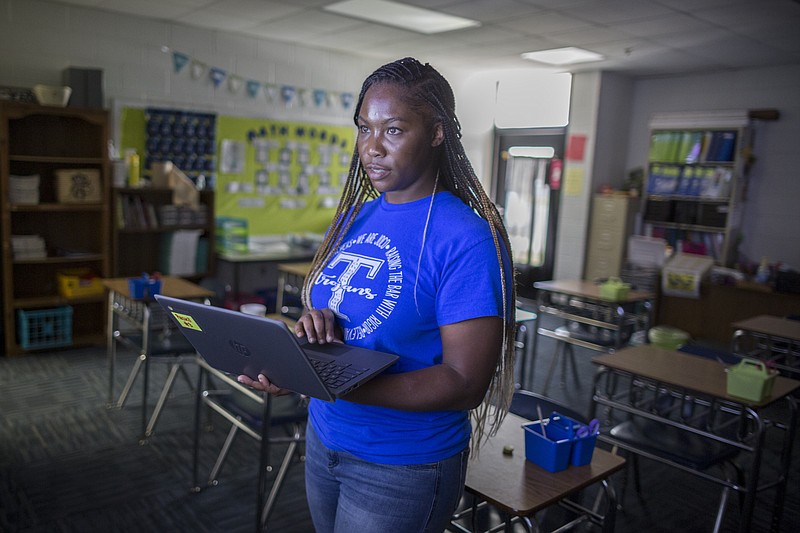Twenty-two months ago, the world's top health experts said this COVID-19 thing might be bad, but it eventually would blow over and we'd be done with it.
Today, we know that was not and still is not the case. And we are learning, if we haven't already, there are no perfect solutions to our day-to-day problems dealing with the virus.
We offer three cases in point:
> Masks: We were told they weren't helpful, then they were absolutely essential and now that they offer only varying degrees of help, depending on what they're made of (maybe).
> Vaccines: We were told they couldn't be properly developed soon enough to help, then they were suspect because the Trump administration had promulgated them, then they were essential to ending the virus, then they might not be as helpful against some variants, then that a booster would give people even more protection, then that were some breakthrough cases (and then a lot), and now that they are the best protection that can be offered at the moment.
> Children: We were told they had very little chance of being sickened by the virus, then that the variants might be a little worse for them than with the original virus, and now that many can get sick and are getting sick from COVID (though fortunately few very seriously).
We say all this not to make light of the precautionary assistance of masks, the efficacy of vaccines (we're believers) or the change in the effect of the virus on children but to emphasize that what we said way back in March 2020 still goes: There is no playbook to COVID-19.
So it is here in the cold, gray, awful midwinter that we find, with the still surging omicron variant of the virus, Hamilton County reigniting its joint virus task force, the Hamilton County Schools desperately searching for teacher substitutes and a group of schools returning briefly to virtual learning.
Hamilton County Mayor Jim Coppinger, in the announcements portion of the Hamilton County Commission meeting Wednesday, said 6,000 people "are walking around with active cases right now" (when the number had been down to about 120) and that the numbers of patients in hospital intensive care units and on ventilators were up.
However, he said 75% of the people in the hospital with the virus were unvaccinated and that nobody in the intensive care unit was vaccinated.
(READ MORE: COVID-19 cases are higher than ever in Hamilton County Schools)
The task force, which brings in local medical and health care experts, was reconvened to help local mayors make decisions about recommendations that will inform, coordinate, and strengthen local response efforts to the virus.
Meanwhile, school districts, Hamilton County among them, are struggling to find enough substitute teachers to take the places of instructors who are out with the virus or home with children with the virus.
It was a topic of discussion in a Hamilton County Board of Education agenda session earlier this week, with a mention being made that occasionally classes had been merged when no teacher was available.
(Not so long ago, such a strategy - then called team teaching - was recommended in certain cases when the same concepts were being taught to two different classes, but we digress.)
Nearly 10 school districts in the Tennessee Valley are closed this week because of the virus, and nine Hamilton County schools have shifted to remote learning through today or Monday.
While the left would have you believe there are no tools available since the state now prohibits entire school districts to shift to virtual learning, districts can request that individual schools shift to remote learning for up to five days if a waiver request is submitted and approved by the state commissioner of education.
A return to virtual classes is certainly not optimal, as 2021 standardized test scores across the country proved, but it is a limited tool in the toolbox that is available. If it needs to happen more frequently, so be it.
Unfortunately, the children in those virtual classrooms may be sick themselves. The number of school-aged children (between 5 and 18 years old) testing positive for the virus in the state over the last 14 days has nearly doubled, according to the Tennessee Department of Education, going from 17,980 for the week of Jan. 8 to 31,525 for the week of Jan. 13.
While Hamilton County had nowhere near the 6,711 cases in Shelby County (Memphis), it nevertheless totaled more than 1,000 cases.
So, if you hear anyone saying with certainty, about any virus situation, "If we'd only have done this ...," or "If we'd only do that ...," run the other way. They don't know what they are talking about.
The best hope any of us can have at this point is that in some European countries and in some U.S. cities, the virus appears to have peaked and is slightly on the wane. We should hope that is true but continue to protect ourselves as if it isn't.
